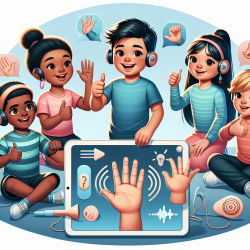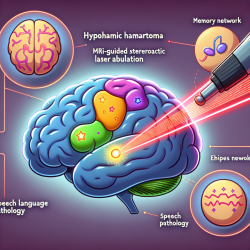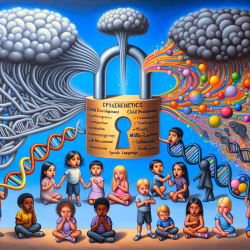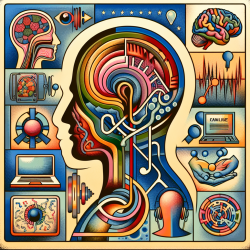Introduction
In the realm of speech-language pathology, understanding the intricate relationship between gestures and language development is crucial for enhancing therapeutic outcomes. The research article "A Cross-Species Study of Gesture and Its Role in Symbolic Development: Implications for the Gestural Theory of Language Evolution" provides valuable insights into how gestures scaffold symbolic development across species, including humans. This blog post will explore how practitioners can leverage these findings to improve language development in children.
The Role of Gesture in Language Evolution
The study examined the communicative gestures of a language-enculturated chimpanzee, bonobo, and a human child. It found that gestures often precede symbolic representation, suggesting that gestures lay the foundation for language development. This ontogenetic sequence from gesture to symbol is more pronounced in humans, supporting the theory that gestures played a pivotal role in the evolution of language.
Implications for Practitioners
For practitioners, these findings underscore the importance of incorporating gestures into language development programs. Here are some actionable steps:
- Encourage Gestural Communication: Encourage children to use gestures as a form of communication. This can help them bridge the gap between understanding and verbal expression.
- Integrate Multimodal Communication: Use a combination of gestures and verbal cues to reinforce language learning. This approach aligns with the study's findings that multimodal expressions enhance communicative intent.
- Observe and Adapt: Regularly observe children's use of gestures and adapt therapeutic strategies to support their transition from gesture to speech.
Encouraging Further Research
While the study provides a strong foundation, further research is needed to explore the nuances of gestural communication in diverse populations. Practitioners are encouraged to contribute to this field by documenting their observations and sharing insights from their practice.
Conclusion
Understanding the role of gestures in language development offers a powerful tool for speech-language pathologists. By integrating gestures into therapeutic practices, practitioners can enhance language acquisition and foster better communication outcomes for children.
To read the original research paper, please follow this link: A Cross-Species Study of Gesture and Its Role in Symbolic Development: Implications for the Gestural Theory of Language Evolution.










